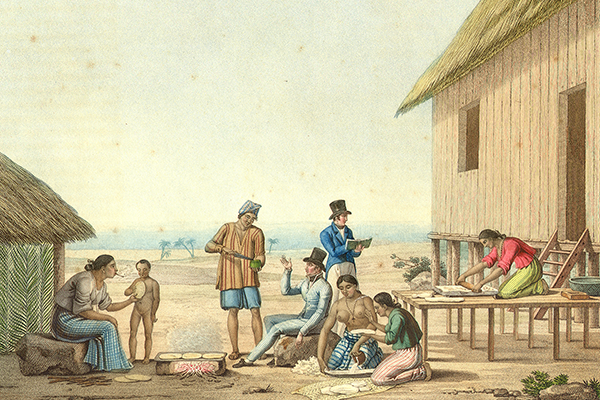Geftao: Unselfishness

Generosity
In CHamoru culture many values are exhibited in daily life. Geftao (generous, giving in the CHamoru language) is an example of a principle that conveys cultural mores through practice and lifestyle.
To be geftao is a holdover from ancient CHamoru times. For example, it is unacceptable and a cause for embarrassment to be a poor host (taotao guma’) to your relatives, friends and even strangers. A CHamoru host’s goal is to make their guests comfortable when they visit their homes or at events such as parties or social gatherings.
It is a common sight in traditional CHamoru homes for guests to be offered (always more than once) and even served drinks and food by hosts or children. A good host will also check on their guests several times to see if they want for anything and ensure that they are comfortable. If it is a party, when the visitors depart, they usually do not leave empty handed. More than likely they are given food that has been packed for them to take home so they may eat again later.
Intricate protocol
It is considered good manners for guests to express humility when offers are made, although this back and forth of hospitality is an intricate process. A guest may refuse once or twice, in the spirit of politeness, but should always accept the next offer – even if they don’t want the offering – or they will be considered rude and take the risk of the host being offended, insulted and even hurt.
Chamorro Heritage: A Sense of Place, a book prepared by the Department of CHamoru Affairs, explains that while the concept of geftao or yo’ase’ (to be hospitable or giving) is not unique to CHamoru culture what makes it unique is:
…the merging of a desire to share with that visitor. For example, when visiting one’s home, it is not enough to simply be gracious and courteous, but additionally invite – invite to the point of insistence – that one must share food in a meal with each other. Another example has been that of giving the unqualified use of prized possessions such as land, when a need has been perceived, and expecting it to be returned when the other person’s need has been satisfied. Finally, when one assists in any effort, such as fishing, the host or owner feels obligated to share the results of that effort, in this case a catch of fish, with those who were simply present.
Ancient CHamoru practice
One of the earliest recorded historical account of the CHamorus showing geftao was made by Spanish Catholic Fray Juan Pobre de Zamora who jumped ship in 1602 in Luta (Rota) – located 40 miles north of Guam in the Mariana Islands – prior to the introduction of Christianity.
Zamora was impressed by the “Christian nature” of his CHamoru hosts and their sincere gentility. Zamora also described more detailed CHamoru values, especially inafa’maolek, literally translated to mean to make good, which considers the importance of the well-being and benefit of all in the community over independent needs. Inafa’maolek is a central philosophy of CHamoru cultural values.
Fray Juan Pobre de Zamora visited Luta (Rota) in 1602. He stayed in the village of Tazga, which was located about 50 paces from the sea. He reported that the CHamorus were good to him and invited him to share whatever they had. They treated him as a family member. They, the chief, Sunama, and his wife, Sosanbra, treated him as a son, and the chief’s children treated him as a brother.
Extension of a core value
The core CHamoru value of inafa’ maolek is basically interwoven with the practice of geftao, which is an extension of the other traditional CHamoru cultural traditions: reciprocity, respect and family.
For further reading
Cunningham, Lawrence J. Ancient Chamorro Society. Honolulu: Bess Press, 1992.
Chamorro Heritage, A Sense of Place: Guidelines, Procedures and Recommendations For Authenticating Chamorro Heritage. The Hale’-ta Series. Hagåtña: Department of Chamorro Affairs, Research, Publication, and Training Division, 2003.
Driver, Marjorie G. The Account of Fray Juan Pobre’s Residence in the Marianas, 1602. MARC Miscellaneous Series No. 8. Mangilao: Micronesian Area Research Center, University of Guam, 1993.